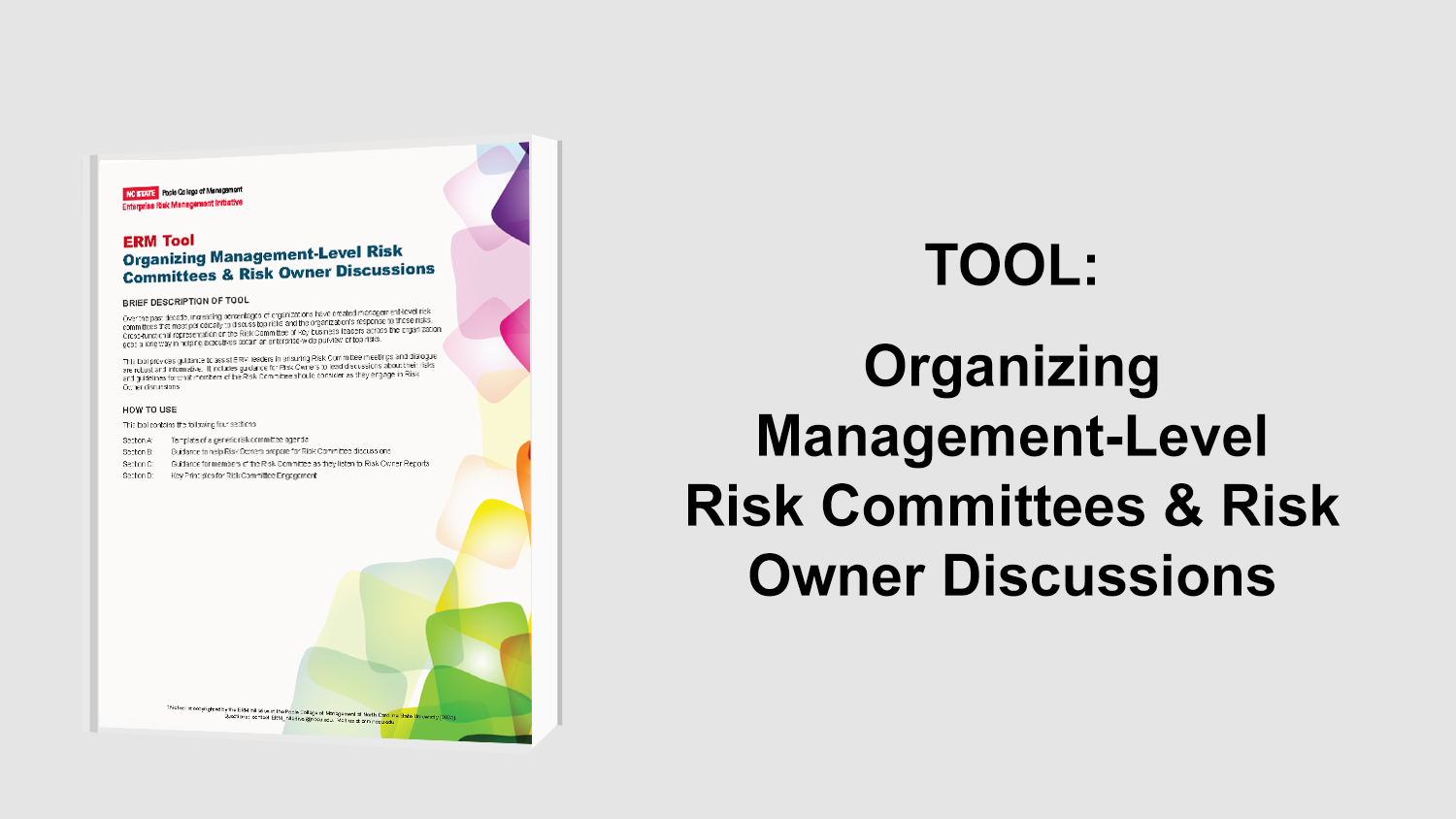Sustainability—Beyond Enterprise Risk Management
AON has created a business sustainability platform that considers a broader array of risks than traditional enterprise risk management systems. Described in a recent thought paper by AON, the platform involves evaluating external implications of social and environmental events such as the interaction between corporations and their communities, as well as the release of greenhouse gases and CO2 emissions that might have an impact on the corporation’s profitability, brand, or reputation. The framework supports the notion that these external factors are directly linked to corporate activities, economic performance, and sustainability. AON emphasizes a “parallel care and respect for ecosystems and people” and asserts that a lack of this understanding could inhibit companies from being able to recognize and respond to all risks that might be affecting their operational performance and success.
On a general level, sustainability includes identifying, analyzing, and managing risks that are currently related to a business’s operational success. Corporations should understand internal risks as well as external risks such as changes in the corporation, its environment, and the world in which we reside. In addition to the consideration of risks, opportunities should also be identified and used as a way to increase reputation and overall profitability. Sustainability incorporates all of the components of traditional ERM while adding components for social, environmental, and a broader approach to economic factors. Sustainability reports have become more popular in recent years as the public has become more concerned with social and environmental performance in addition to economic performance. Focusing on the social and environmental performance has been described as the “triple bottom line” and has resulted in lengthy reports written by corporate management. The idea of the so-called “triple bottom line” was introduced in 1997 by John Elkington.
AON’s sustainability platform specifically involves the analysis of evolving and future anticipated risks including climate change, energy consumption, waste generation, non-renewable resources, and water use. All of these factors are considered to have a potentially significant impact on a corporation’s ability to maintain profitability as well as their brand image and reputation. This expanded view of ERM has been supported by many organizations that have developed standards for corporate sustainability reports. Some of these organizations include Dow Jones, Standard & Poor’s, Storebrand, and Oliver Wright.
The five components of AON’s sustainability platform are described below. Each of these includes risk optimization and mitigation as well as a monitoring and ongoing evaluation aspect.
Economic Performance
Economic performance is evaluated based on historical and projected performance. Sustainability focuses especially on the economic environment and its effect on new business ventures, product development, and expanding markets to other countries. This component is much like the traditional ERM framework, but has a broader focus on the direct impact of external economic factors.
Environmental Performance
This component is probably the most unique to sustainability when compared to traditional ERM systems. When analyzing environmental performance, sustainability focuses primarily on the corporation’s impact on its eco-system including its carbon footprint, waste generation and disposal, toxic tort claims, discharges into streams or lakes, and environmental compliance. A corporation may also evaluate its use of raw materials and capability to recycle unused materials.
Social Performance
Similarly to environmental performance, social performance evaluates the corporation’s impact on the outside world, targeting its impact on human beings. The interaction between the corporation and its community is important to operating a sustainable business. Respect for employees, customers, and shareholders is important to a corporation’s social responsibility. Specifically, evaluation of sexual harassment training and prevention, community outreach programs, product quality and reliability, and employee and consumer privacy may be include when considering an organization’s social performance.
Operational Performance
Operational performance is more applicable to the traditional ERM systems present today. This component involves the analysis of corporate objectives and their achievement, as well as the overall efficiency of a corporation’s operations. Supply chain review, emergency response procedures, and flowcharts of manufacturing processes may be considered as part of the management of this component.
Strategic Performance
Strategic performance is the process of evaluating the major decisions made by managers regarding strategic planning, global expansion, target markets, and product breadth. Corporate governance, competition, and customer bases should also be considered. Analyzing the strategic performance provides insight into how the corporation is managed and controlled in order to achieve its operational objectives.
The most difficult part of implementing a sustainability platform is the same as the complications with traditional ERM systems—convincing management that it is necessary for business success. It is hard to evaluate the return on investment for risk management systems, and sustainability platforms provide the same hang ups as any other system. AON describes several examples of reasons that sustainability will improve business operations and inevitably increase profitability. Reputation and brand strength are directly affected by an organization’s values and social and environmental principles. A strong relationship with the community that fosters respect and appreciation for the business’s customers is essential to maintaining a positive brand image. In addition, the ability to be competitive, effective, and desirable in the marketplace is greatly affected by the quality of the products and services provided. Sustainability platforms can help to assure customers that the company respects the environment and uses alternative materials when possible.
Efficiency and productivity can also benefit when a sustainability platform is implemented. Reducing material requirements and energy required for production can reduce costs and often improve the quality of manufactured products. Costs are likely to increase if social and environmental considerations are ignored. Regulatory agencies may be stricter, which can create costly distractions for management. Also, the failure to consider the environmental impact of its operations could result in negative publicity for the corporation, which could also distract management and make it difficult for operations to continue in a successful manner. Many investors and lenders base decisions on whether or not a corporation values social and environmental performance. In this respect, having a sustainability platform could decrease the cost of capital. Lastly, legal liabilities that arise from non-compliance with environmental regulations may result in severe changes in the corporation’s net income.
AON continues with examples of companies who have incorporated sustainability platforms, but finishes with the growing importance of sustainability and its necessity in the current global marketplace. Understanding foreign laws, customs, and traditions is essential to success in a global economy and sustainability can help corporations identify their social and environmental values. Sustainability helps to identify opportunities and mitigate risks in order to enhance economic performance and shareholder value while showing respect to investors, stakeholders, and the community.
Original Article Source: “Sustainability – Beyond Enterprise Risk Management“, AON, 2007
- Categories:
- Types:


